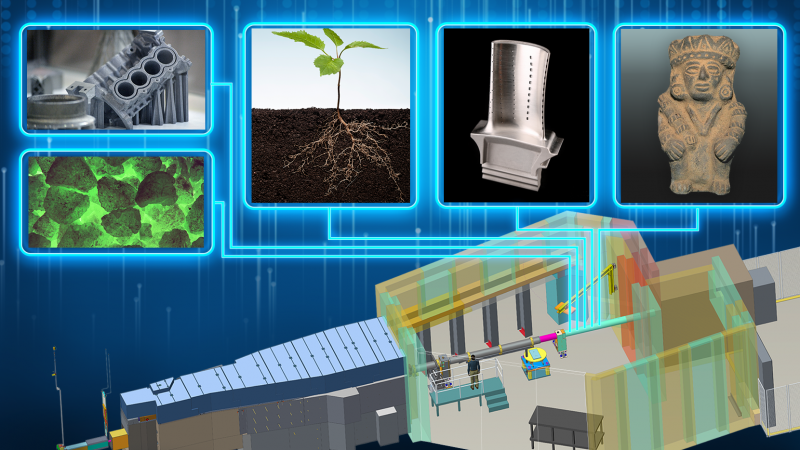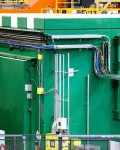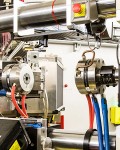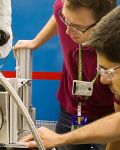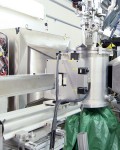The ability to directly see the atomic fabric of materials provides pivotal information in accelerating the design and improving the performance of future technologies. Visualizing in real space the behaviors and dynamics of materials requires powerful probes and advanced instrumentation.
Construction has begun on VENUS, a state-of-the-art neutron imaging instrument, at the Spallation Neutron Source at the Department of Energy’s Oak Ridge National Laboratory. This new instrument will provide a platform for studying in real time the makeup and performance of a wide range of functional materials under varying environments.
VENUS will benefit diverse research areas including the development of energy-related materials (e.g., batteries, nuclear fuels, biofuels); advanced engineering materials (e.g., additively manufactured alloys, aluminum and steel, carbon fibers, concrete, glass); and studies of archeological and natural materials, providing insights into geological processes, biology and plant physiology.
Coupled with SNS, the world’s most powerful pulsed accelerator-based neutron source, VENUS will be the only open research facility platform in the US to provide time-of-flight neutron imaging capabilities to users from academia and industry.
Neutrons play an important role in our understanding of the material world. Scientists use them to study the structure of matter—from the benchtop to the atomic scale—because neutrons are deeply penetrating, carry no charge, and are nondestructive, making them suitable for studying, for example, biological structures, metal stresses and defects, and magnetic behavior in quantum materials.
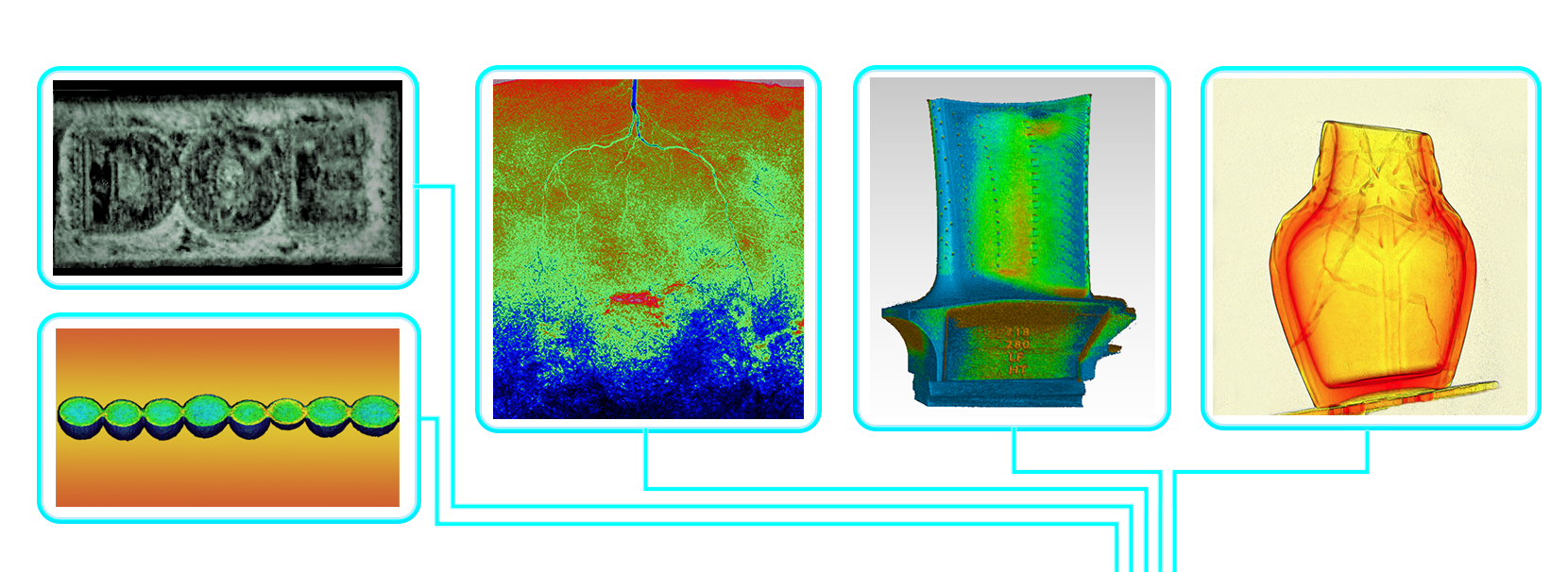
Actual data images illustrate distinctions between heavy elements used in nuclear fuels (left), varying crystalline orientations in additively manufactured materials (D-O-E), hydrogen transport in plant and biological systems, identifying
internal defects in engineered materials, and nondestructive analysis of historical artifacts. (Credit: ORNL/Jill Hemman)
In general, as neutrons scatter, or “bounce” off atoms in a material, they reveal information about an atom’s location and behavior. Neutron imaging, on the other hand, measures in transmission–as neutrons pass through a material—to produce a neutron radiograph, much like a clinical x-ray.
“Neutron imaging is about contrast—seeing something behind something else or seeing the difference between one side of your sample and the other,” said ORNL instrument scientist Hassina Bilheux, a lead developer in the VENUS project. “For example, if you want to see lithium as it’s moving through the battery, you need contrast to isolate the signal coming from lithium ions.”
Building the VENUS beamline at SNS will leverage the facility’s accelerator-based neutron source and provide advanced imaging techniques that complement those currently available at the lab’s steady-state neutron source, the High Flux Isotope Reactor. The SNS pulsed-source accelerator enables the time-of-flight technique, which uses time-stamped neutrons that can be adjusted and preselected across a range of energies. The technique provides the tunable contrast necessary for revealing structural information with low-energy neutrons using an approach called Bragg-edge imaging. It also pinpoints specific elements within a sample using high-energy neutrons with resonance imaging to better understand the material’s functional properties and behaviors.
“For example, to distinguish between certain heavy elements such as europium, tantalum, gadolinium, and uranium, one needs higher-energy neutrons, which SNS provides,” said Bilheux. “Measuring with VENUS will provide us with three-dimensional maps showing us where a heavy element is located within a sample, and we’ll be able to switch between different heavy elements. That capability will be incredibly beneficial in optimizing the efficiency of novel nuclear materials, which is a high priority for DOE.”
VENUS is on track to be completed in 2022 and expected to be ready for scientific users by 2023. The beamline will ensure the United States remains competitive with international spallation sources that are already building or currently operate advanced imaging instruments.
To meet the 2023 timeline, the developers are using a portion of the beam time on the SNAP diffractometer to develop imaging software and train the user community ahead of VENUS’s launch. Design of the instrument and its major components is also in progress.
“VENUS will enable us to not only gather information about a material’s structure but also how the structure is changing during applied load such as heat or pressure,” said Bilheux. “We’ll be able to do more experiments and get faster results, all without having to use multiple imaging instruments.”
SNS is a DOE Office of Science User Facility. UT-Battelle LLC manages ORNL for DOE’s Office of Science. The U.S. Department of Energy’s Office of Science is the single largest supporter of basic research in the physical sciences in the United States and is working to address some of the most pressing challenges of our time. For more information, visit https://energy.gov/science.—by Jeremy Rumsey


